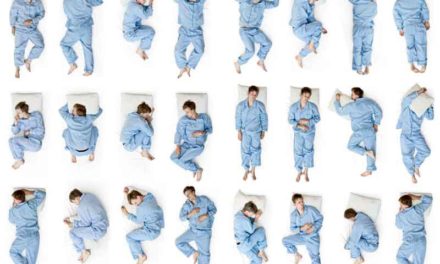Like dealing with diabetes is not enough of a challenge, managing this condition during menopause could become double trouble if you don’t know what to expect regarding the changes your body will go through. The most efficient way to remain in control is to be prepared for what is about to happen and be one step ahead.
What is Menopause?
A woman’s menstrual cycle reaches the end around the age of 50 and that period is also known as menopause. For most women, menstruation becomes less and less frequent, with longer intervals of time between, until they stop completely. There are some cases when the menstruation stops suddenly, without that period of transition. After a certain age, the ovaries can’t produce any more eggs each month because the estrogen levels are decreasing.
The expression „going through menopause” refers to the period of changes in a woman’s body, before menstruation ends forever. Periods usually come to a gradual halt, becoming less frequent and with longer intervals between each one before stopping forever, but for a small percentage of women, the end of menstruation can happen suddenly. Regardless the situation, during this process, a woman goes through many physical and emotional changes which can influence her overall health.
The change in the hormone level can cause women to experience certain symptoms like flashes, mood swings, night sweats or vaginal dryness. Also, the blood sugar levels are influenced which means a higher risk for problems at women diagnosed with diabetes.
If You Know What to Expect, You Know How to Cope
It is normal for women to start experiencing first menopause symptoms around the age of 50, or even earlier, starting from 40. The years leading to menopause are known as the perimenopause period, and during that time it is common to deal with sleep disturbance, emotional ups and downs, hot flashes and dryness of the vagina. These symptoms don’t fade away once menopause is installed, but they continue in the years to come as well. Each woman is different, so the severity of these episodes varies from one individual to another, ranging from wild experiences described as debilitating to barely noticeable changes. In the case of women who experience menopause as a result of the surgical removal of the ovaries, they go through more severe experiences compared to those who reach menopause naturally.
As women age the levels of estrogen and progesterone decrease and as a result ovaries become less responsive to the hormonal messengers and the ovulation reduces its frequency. Fertility declines suddenly after reaching the age of 40. Still, it is not impossible for women sexually active to become pregnant during the perimenstrual period. Contraception is necessary if you don’t plan to have a baby during this time. The risk of becoming pregnant vanishes one year after the menstruation stopped completely.
Women with diabetes might deal with additional problems during premenopause as well as on postmenopause. Hormonal fluctuations are very common during this time, and they influence the blood sugar levels. That is why the symptoms of diabetes and menopause sometimes are easily mistaken. Before starting any treatment, it is essential to determine the cause of the low or high blood sugar levels. Progesterone and estrogen have a direct impact on the blood sugar levels. While the high levels of estrogen might increase sensitivity to insulin, the high levels of progesterone might have the opposite reaction. If the sensitivity to insulin is reduced than a higher dose of insulin is needed to keep blood sugar level within certain limits. Like this is not enough, both health issues increase the risk of developing osteoporosis, so women diagnosed with diabetes must be extra careful in taking proper measures to maintain the strength of the bones.
Diabetes control can be disrupted by the lack of sleep, whether it is caused by stress, menopause, or any other reason. Controlling the weight becomes another problem usually associated with menopause, which is another reason for blood glucose to get out of control.
How is Diabetes Different from Menopause?
Making the difference between the symptoms of diabetes and those of menopause is one of the first challenges women must face at that point. Body’s reactions to the changes caused by menopause are often mistakes with those which indicate a low blood sugar and cause a chain reaction which might have dangerous effects. For example, night sweats disrupt the sleep and cause fatigue during the day, which could be interpreted as a sign of low glucose in the blood. To increase the energy, one could eat excessive calories, and this will lead to high blood sugar. For a healthy woman the result could be some extra pound gained after a while, but for women who have diabetes, the consequences could be fatal.
Just like high glucose in the blood, the low levels of estrogen once menopause starts to install can increase the risk of the urinal and vaginal infections and dryness. Even if these conditions can be treated without many complications, it is important to know the cause so the effects could be better managed.
The best way to figure out what is the source of certain symptoms is to check the blood sugar levels continuously. All women suffering from chronically high blood sugar levels must address this problem to a doctor.
Keeping the Menopausal Symptoms Under Control
If blood sugar levels check out, then it leaves menopause as the source of the symptoms and the treatment can be chosen according to the degree of control each woman has over diabetes and the severity of the symptoms. Hormone therapy should be carefully chosen because in the case of women who can’t adequately control their diabetes might cause cardiovascular complications.
Some life changes adjustments can be made to ease up a little the unpleasant symptoms of menopause:
- Physical activity can improve mood, increase energy and reduce weight
- Replace processed and refined foods with fresh fruits and vegetables and whole grain to reduce blood sugar and pressure while increasing the energy levels
- Reduce or completely give up on caffeine, alcohol, and spicy food because they cause hot flashes and lessen the quality of sleep.
- Include in the daily diet beans and soy because they are rich in phytoestrogens, chemicals which act like estrogen and could reduce the intensity and frequency of hot flashes episodes.
- Use vitamins and minerals according to each person’s needs. Women at menopause following a hormonal therapy must add to the equation 1.500 milligrams of calcium, and at least 800 units of vitamin D to keep the bones safe from osteoporosis.
- Although there are limited studies on the effects of teas and herbal supplements regarding menopause symptoms, plants like garden sage or motherwort could help improve the severity of the episodes.
- Even if it is not an easy decision to take try to stop smoking to improve the effects of menopause on the body and the overall health.
Episodes of hot flashes are the most frequent symptom of menopause and sometimes they are so severe that they manage to turn the entire life upside down. There are some simple tips and tricks one can do to regain control over their life:
- Avoid direct contact of face with heat produced by beauty devices like curling iron or hair dryers
- Long bubble bath should be replaced with cool showers
- Drinking icy cold water will cool down the heat
- Dress up in layers, so if you feel too hot you can take off as much as necessary
- When sleeping try to leave a window open of place fan in the room and cover with a light blanket
- Air conditioner is required for the home
- Cold compresses on the face will make you feel better
- Breath in deeply and count to 10 then slowly exhale while count to 10 and repeat at leat ten times
Treatment for Severe Symptoms
Some women must deal with dangerous and unpleasant symptoms of menopause in addition to diabetes, and this is why these painful episodes must be easier so women can continue with their routine and not endanger their health.
Menopause is generated by a hormonal unbalance so the doctors could recommend hormone therapy, based on estrogen and progesterone, to alleviate symptoms like night sweats, hot flashes or vaginal dryness. Usually, estrogen is used for therapy in women who underwent hysterectomy, because it can increase the risk of developing uterine cancer. Women who didn’t suffer a surgical removal of the uterus and still want to take estrogen will be recommended a mix of estrogen and progestin. This is the only treatment for hot flashes based on hormones approved by FDA and it was reported that it could also improve the mood and sleep, but scientifical data still need to confirm these benefits.
Although this treatment brings benefits related to menopause, it can also cause some dangerous side effects, confirmed by medical studies, like heart attack, stroke, blood clots in the lungs or dementia. Individual studies confirmed that by taking estrogen, the sensitivity to insulin is improved. This effect was not noticed when the estrogen was mixed with progestin. Considering that women with diabetes are already exposed to the cardiovascular disease, it is critical for the doctor to be fully aware of your medical condition before prescribing the treatment. Also, the doctor must be informed of any family history regarding breast cancer or blood clotting in the lungs.
There is an alternative to hormonal therapy more suited for women who can’t opt for this treatment. Instead, they are prescribed blood pressure or neurologic medicine or even antidepressant.
- Vaginal and Urinary Symptoms
Low quantities of estrogen can make the tissue of the genital organs and urethra thinner and dryer, and it can increase the risk of developing vaginal and urinal infections. Topical lubricants can offer temporary relief from dryness and improve sexual activity, although the effects of low estrogen are not reversed. Itching and burning are reduced with over the counter moisturizers, but they only treat the effect t and not the cause and don’t compensate the lack of hormones.
On the other hand, genital and urethral tissue can become more elastic, moist and thicker with a prescription vaginal product based on estrogen-like tablets, creams or ring administrated directly on the affected area. This treatment carries fewer risks than hormonal therapy because in this case, the estrogen has little chances to reach the blood stream. Vaginal estrogen can’t treat urinal infections. In this case, antibiotics must be used.
- Weight Gain
Genetically, women are more exposed to accumulating more body fat, regardless the diagnosis of diabetes. Female hormones sustain fat formations, while male hormones promote muscle mass. All women are aware that the most sensitive body area to accumulate fat are the abdomen, thighs, buttocks, and arms. Also, unhealthy eating habits play a significant role in increasing the body fat. Skipping meals and diets impossible to follow for long periods of time don’t bring the desired results, on the contrary, they sustain the weight gain. The most efficient way to keep pound under control is to establish regular meals and eat healthy foods like fruits, vegetables, and whole grains.
Losing 10 to 20 pounds doesn’t only make you look better, but it also helps you control the blood sugar levels and blood pressure. Trying to stay active is essential for improving the overall health and control diabetes even if the weight loss is insignificant. Set small goals at first. Start by walking for a few minutes in the park or around the block, swim, exercise the bike, do yoga or any other activity you enjoy. It will improve your mood and help you control better the levels of glucose in the blood.
- A Unique Journey
Every woman is different both physically and emotionally. Just like everyone has a personalized treatment plan for diabetes, menopause requires different treatment for each person. For some women, the transition in the perimenstrual period is quite smooth, and they don’t need to make drastic lifestyle changes. Constant monitoring of the blood sugar, healthy diet, regular exercises and good night rest are enough to help them deal with the hormonal unbalance caused by menopause. But if the symptoms are severe and frequent and you would like to start a hormonal therapy you must consult your doctor for professional advice.
Both Diabetes and Menopause Symptoms Can be Managed
Menopause is a natural phase in a woman’s life. The body goes through important hormonal changes which can set a chain reaction and disturb all the systems. If combined with all the health issues caused by diabetes things can get very complicated. Menopause debuts around the ages of 40 or 50 hen the estrogen levels drop causing less frequent menstruation, moodiness, fatigue, insomnia, hot flashes and gain weight. Some of these symptoms are also generated by diabetes which makes it hard to diagnose and to treat.
To establish the cause of the symptoms and find an adequate treatment any woman diagnosed with diabetes must make a regular check on the blood sugar levels, and if the results don’t justify the symptoms, it is logic to assume the menopause causes them. Weight loss is a risk factor for all women whether or not they have diabetes, but to improve the looks and health condition, it is recommended to make some changes in the lifestyle and establish a regular program of physical activities and avoid unhealthy foods.
Menopause is a difficult period for women. Some of them manage to make the transition without much discomfort; other suffer from severe symptoms. It is important to understand that this period has an ending and meanwhile there are some ways of coping with symptoms. Women are not alike, and the body has specific requirements for each. So, the treatment for menopause must be personalized according to its needs. Talk to a doctor about the issues you deal with and the medical history to be prescribed with the most effective treatment for you.
Resources:






